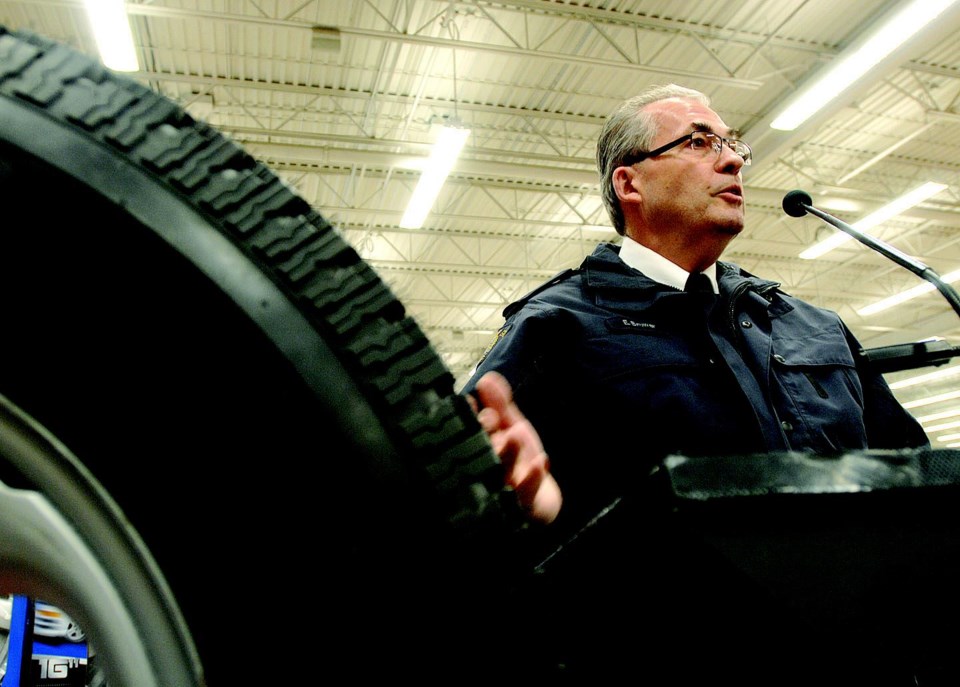The B.C. Ministry of Transportation's winter tire rules came into effect on Thursday, which means for the next six months police have the authority to issue fines to drivers who take to the highways with only summer treads on their vehicles.
But don't worry, at least not yet.
"Common sense will prevail," said Sgt. Al Steinhauser of the North District RCMP's Fraser-Fort George traffic services division when asked if the rules will be enforced in the immediate region given the current weather conditions.
But it is a good time to make that appointment at the tire shop to switch them over.
By the time the daytime high has dropped to 7 C, it's a good idea to be driving on winter tires.
"The reason for this is quite simple," Steinhauser said. "Summer tires don't grip the pavement as well in colder temperatures, and all-season tires aren't suitable for harsh winter conditions, such as ice and packed snow."
Historically, the 7 C mark is usually reached by Oct. 26 in the Prince George area, according to Environment Canada meteorologist Lisa Coldwells, who also warned it tends to drop off dramatically after that date.
The tires must have either the "mountain snowflake" or M+S (mud and snow) symbol on the side wall and have at least 3.5 mm of tread depth to meet regulation.
Of the two, Steinhauser recommends tires with the "mountain snowflake" symbol because it is the mark of a genuine winter tire. Tires marked M+S are essentially all-seasons and, while they generally provide safe all-weather performance, he said they may not always be suitable for severe snow.
He also warned against wide, high-performance tires, other than those that are specifically designed as snow tires, saying they are not suitable for snow-covered roads.
"If you live in a remote area, you can add studs to your tires for better transaction on ice and snow," Steinhauser said.
"Some tires are manufactured with studs built into the treads.
"The only drawback with studded tires is they lack traction in slush and on bare asphalt."
The other telltale sign that it's time to make the switch is when you see a sign warning that drivers of cars and light trucks must have on winter tires and that larger commercial vehicles - weighing 27,000 kilograms of gross volume weight or more, such as tractor trailers - must have chains onboard.
If you go beyond the signs without the proper equipment, you may be turned around by police or the Ministry's Commercial Vehicle Safety Enforcement branch and be subject to a fine.
Driving without the proper tires can yield a $121 fine while the fine for failing to meet the minimum tread depth is $109.
The rules stay in effect until March 31.
For more information on safe driving in the winter, visit shiftintowinter.ca.
Five tips for installing winter tires
1. Look for tires marked with a picture of a peaked mountain with a snowflake.
The symbol ensures winter tires meet industry standards for snow traction performance and have been designed specifically for use in severe snow conditions.
2. Install tires in a set of four.
That's to help maintain control and stability, which will help your car brake more efficiently in icy and snowy conditions. Also, avoid mixing different tread patterns, internal construction and size.
3. Make sure your tires are mounted on the correct side.
If they're designed to spin in one direction ensure they are mounted correctly. An arrow printed on the sidewall should help.
4. Put tires with more tread, and hence more traction, at the rear, even on a front-wheel drive car. Having more traction at the rear of the vehicle, instead of the front, reduces the chances of a vehicle spinning out of control.
5. Remember to keep an eye on proper air pressure.
As temperatures drop, tire pressure decreases.
Transport Canada recommends checking the tire air pressure at least once a month when the tires are cold, preferably after the car has been out all night.
-- Source: North District RCMP



